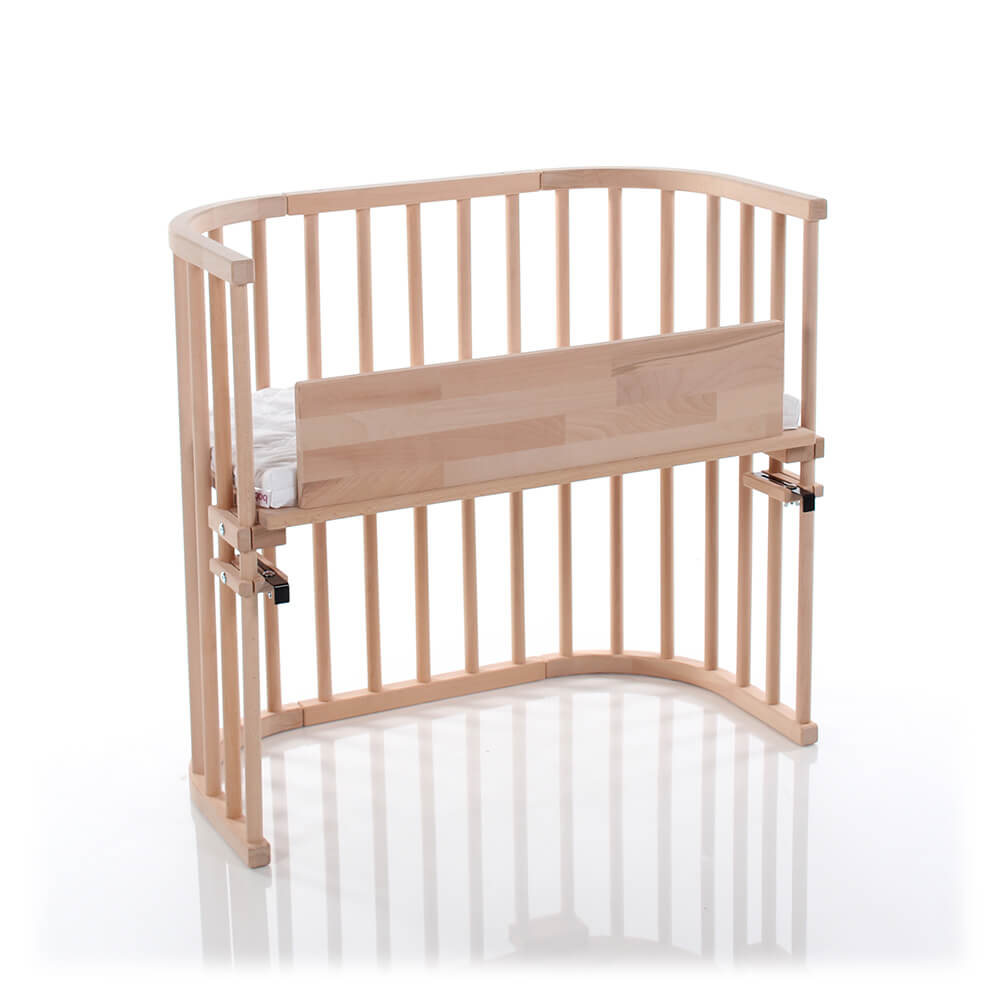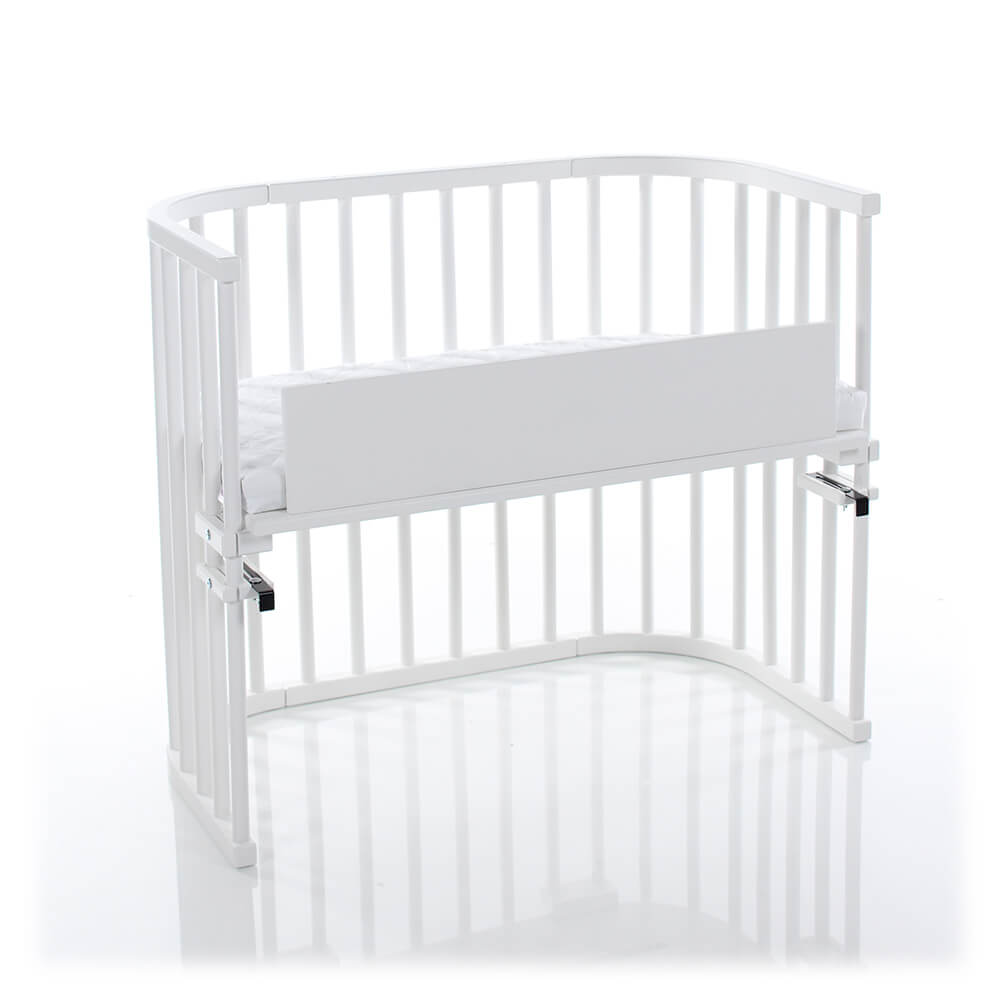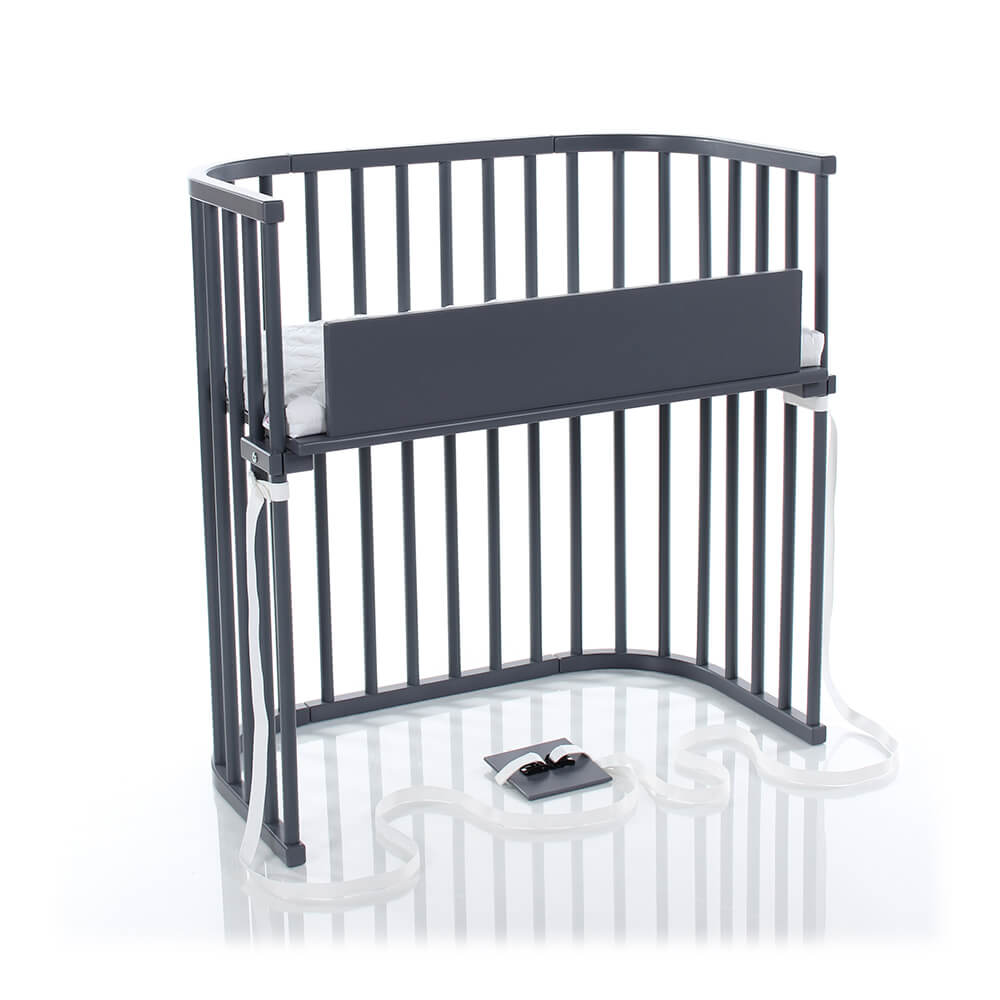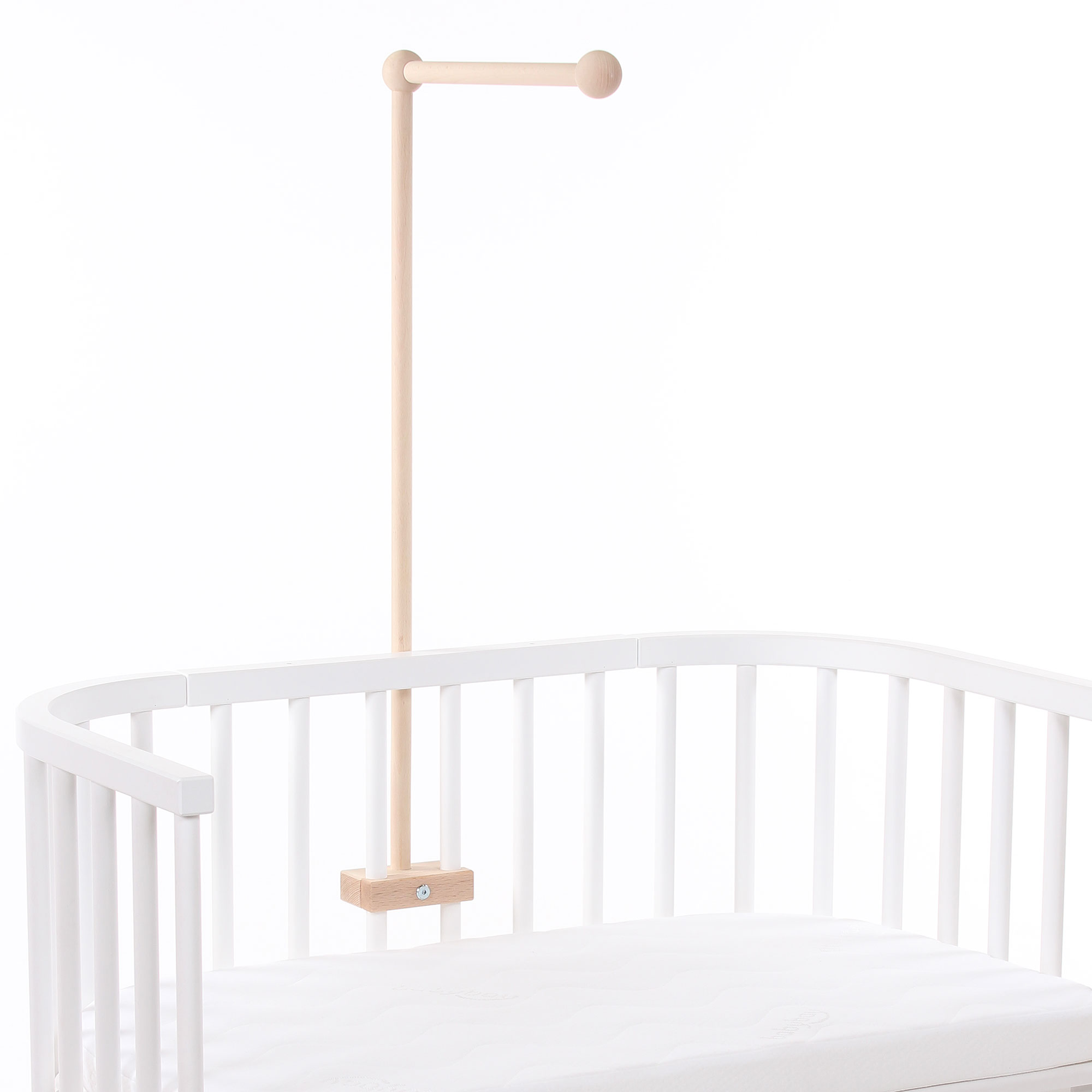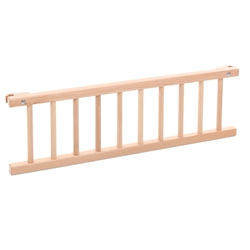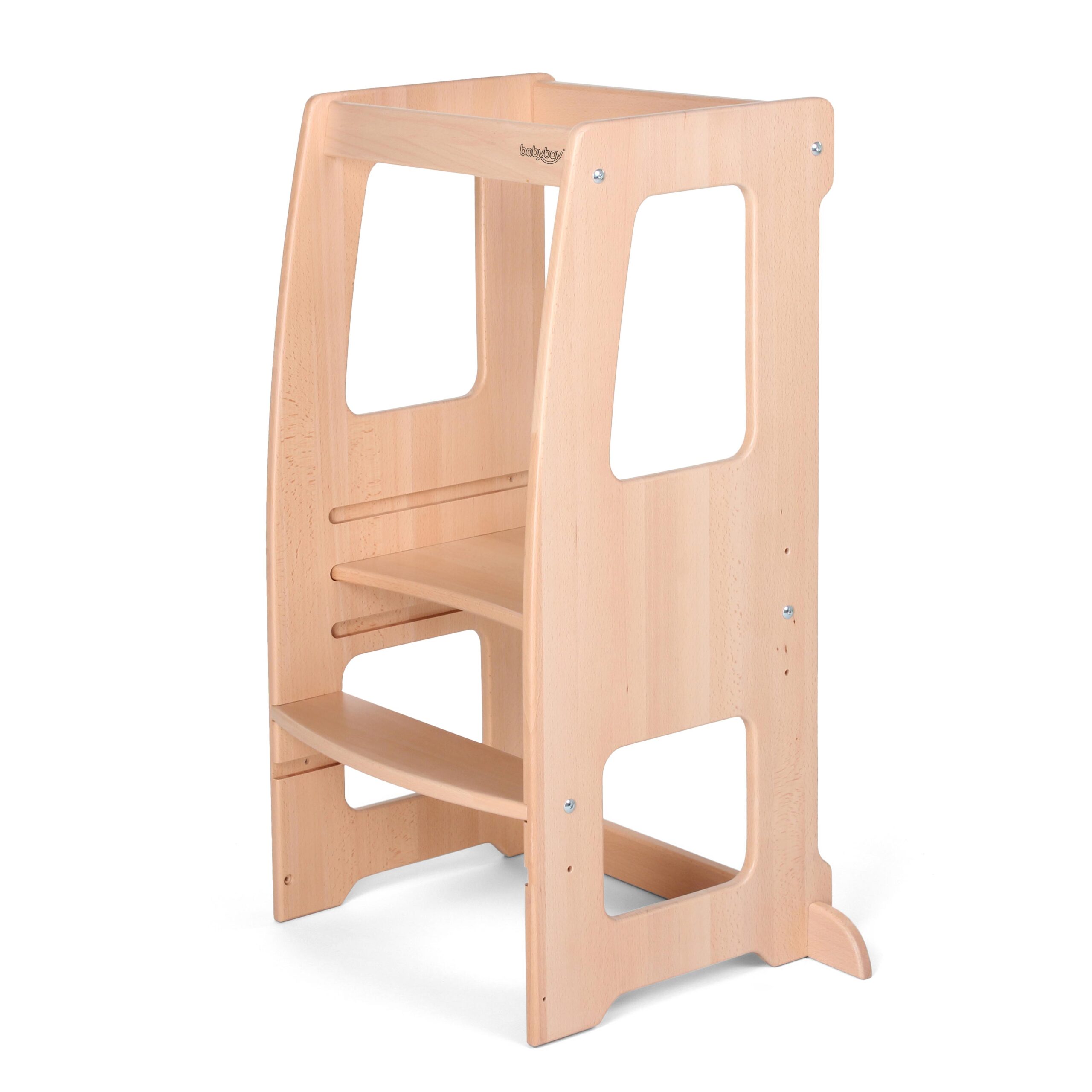Is co-sleeping bad? There’s a lot of conversation about co-sleeping out there. Whether you’re welcoming your first baby to the world or have a family of 5 or 6 already, you’ve probably heard about co-sleeping. And maybe even popped “about co-sleeping” into Google a time or two.
So why all the hype about co-sleeping? Co-sleeping has long been the preferred (and safe, as long as you choose the right method!) way for families around the world to assure that their babies are getting nurturing rest. Before there were beds or mattresses or even cribs, families would gather close together and nestle into a state of happy sleep while lying within arm’s reach.
When the earliest cribs starting coming onto the scene around the 1600s, the hype for co-sleeping didn’t die down. But within the co-sleeping conversation, there’s one important thing to note. Co-sleeping with the help of a safe sleep tool like a bedside co-sleeper is not the same thing as bed-sharing (which is better understood as the practice of inviting your baby to share your own mattress).
That’s why asking “Is co-sleeping bad?” is too simple. But we’re about to set the co-sleeping record straight on all that…
We’re about to break down:
- The back-to-the-basics details about what co-sleeping is and how it became the most common method of sleep around the world
- The benefits that co-sleeping families enjoy, as well as the way families get more rest just by sleeping close to their little one
- How co-sleeping has looked throughout history, and why that matters for sleep deprived parents trying to get more rest now
- Where things really stand in this whole “Is c0-sleeping bad?” question, and what co-sleeping families wish more people talked about
The Best Place to Start Is at the Beginning: What is Co-Sleeping?
Co-sleeping is often the catch-all term used to describe the nurturing experience of sleeping with your baby within arm’s reach.
Though the word “co-sleeping” often brings up images of parent and baby sleeping together in the same bed and sharing the same sleep space, the truth is that there are many ways to co-sleep, and each nighttime routine will look a little different for every family.
In recent years, tools like bedside co-sleepers have made it safe, easy, and stress-free to soak in all the benefits of co-sleeping by giving babies a made-just-for-them place to rest their head and get quality sleep through the night.
These methods aren’t only proven-safe through experience, they’re also backed by some of the strictest safety certification standards on the market, with organizations like ASTM International, TÜV Rheinland, and Confidence in Textiles giving bedside co-sleepers like babybay a full stamp of approval.
And though sleeping in separate bedrooms has become the norm in the Western world (which is the leading thing that causes some parents to wonder whether alternatives like co-sleeping are really the best way to go), that doesn’t mean it’s not the preferred bonding-promoting and safety-assuring method of rest across much of the globe.
In fact, studies (like one famously conducted by anthropologist John Whiting) have found that almost 70% of children living around the world sleep in the company of others. (Take a moment to really let those numbers sink in— 70%!)
Benefits of Co-Sleeping: A Quick But Thorough Overview
Through the act of co-sleeping, you and your baby are able to bond and become close-as-can-be during both your waking and sleeping hours. (Hard to believe, but our sleeping hours account for a third of our day — which is why it’s so important to make them count!)
Your baby also benefits from a boosted immune system and better-supported development for their body and mind, which not only benefits their waking hours but leads to more restful time spent in dreamland as well.
Co-sleeping also makes nighttime nursing a breeze by keeping your baby easily within arm’s reach, so that you don’t have to take walks back and forth across the room or repeatedly over crib bars to give your child what they need.
At the end of the day, it shouldn’t really be surprising that there are numerous benefits of co-sleeping. Human biology naturally encourages child and parent to seek contact during the night.
And while you might think that it’s simply love for your child that has you craving a quick hug, kiss, or loving touch during all hours of the day and night (love is definitely part of it, we promise!), that mutual craving for contact is also just built into our physiology.
While that need for nighttime contact through the night isn’t much-talked about in the United States, it’s something that many other cultures around the world understand well.
In Japan, for instance, the most common sleeping position is referred to as kawa no ji (represented by the character for river: 川). The two longer lines in that character represent the parents, while the shorter one represents the child sleeping between — showcasing the close proximity and sleep-together care that goes into nighttime sleep setups.
But in America and other Western cultures, history has set a trend of separating parents and babies during the night.
That’s not because separating parents and babies is better — we’ve just gotten so used to sleeping separately that it’s hard to imagine that another way of sleeping could be more beneficial.
Co-Sleeping Throughout History: Why the Question “What Is Co-Sleeping” Only Started Needing to Be Asked Recently
The Western world’s interest in sleeping separately can partly be traced back to the 19th century, when it became fashionable to show your wealth by building houses with extra bedrooms and filling those extra bedrooms with plush mattresses and beautiful cribs.
Though collecting mattresses is no longer the in-trend fashion statement it used to be, most families in the Western world continue to encourage their children to sleep in separate rooms.
And while there’s nothing wrong with preferring for your child to sleep in a space separate from yours, over time this became seen as the standard way to sleep in the Western world — which quickly made all other sleeping methods seem like unideal alternatives (even if they did, in fact, actually come with a whole host of rest-giving and mind-balancing benefits).
So Let’s Sum It All Up: Is Co-Sleeping Bad?
When co-sleeping is practiced safely, it delivers a bounty of benefits while helping you feel closer to your child (emotionally and physically!) all night long.
But just like you have to make decisions with safety in mind when preparing a nursery or separate room for your child to sleep in, you need to make safety a priority when deciding the co-sleeping method that works for your family.
But if you aren’t sure where to start, start here: bedside infant co-sleepers make safe co-sleeping easy as can be by gifting baby with a safe, secure, and supported space to sleep by your side.
Your baby gets to drift off into sweet dreams with you within arm’s reach, while you get to enjoy the worry-free rest that comes from knowing you can quickly and easily respond to any nighttime feeding call that comes throughout the night.
And while there may be other ways of co-sleeping out there, there’s only one safe co-sleeping method we can recommend.
With the right bedside sleeper by your side, you’ll never have to wonder Is co-sleeping bad? again. You’ll be able to confidently drift toward dreamland, knowing your baby is safe, happy, and soaking in all the benefits that co-sleeping has to offer.




